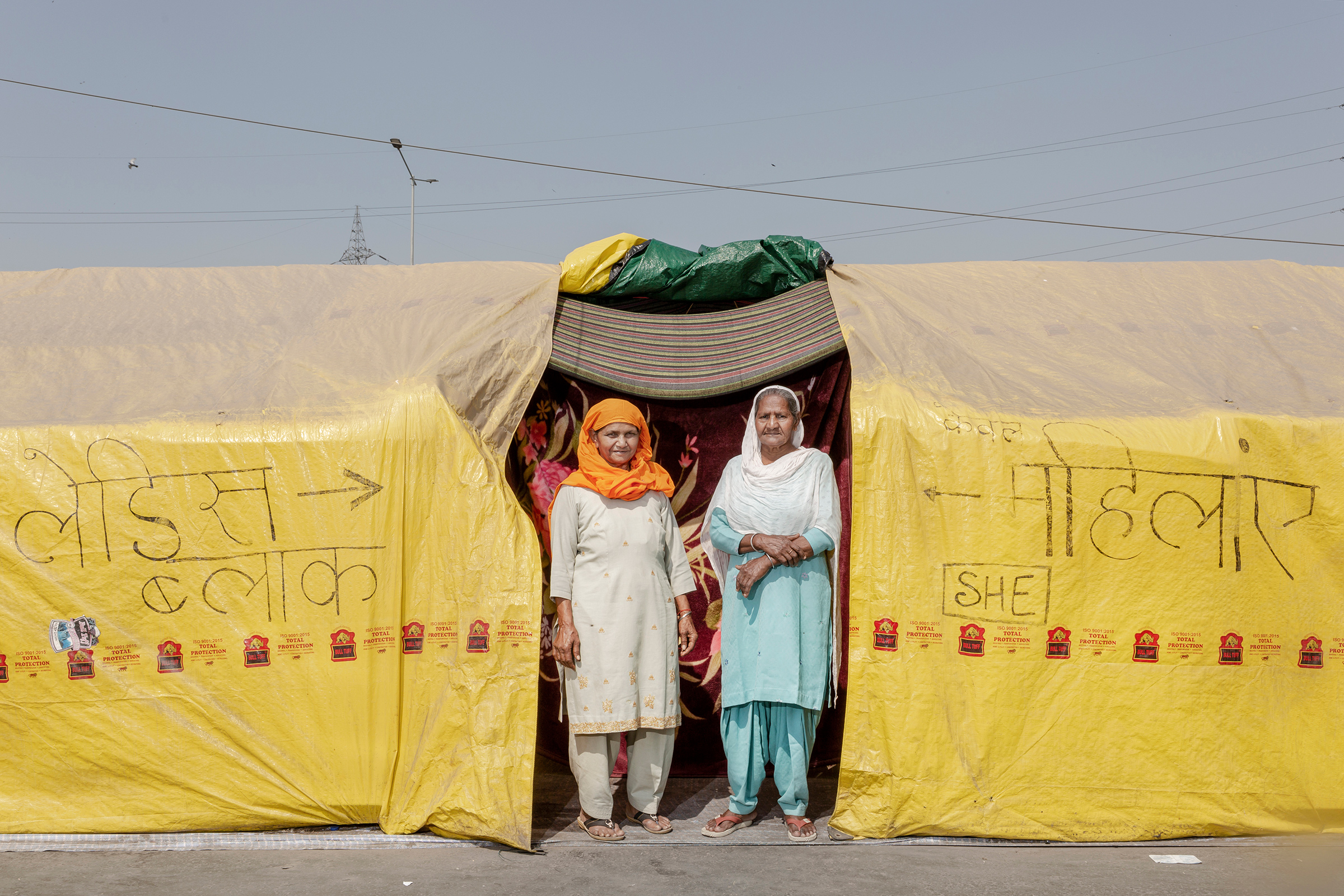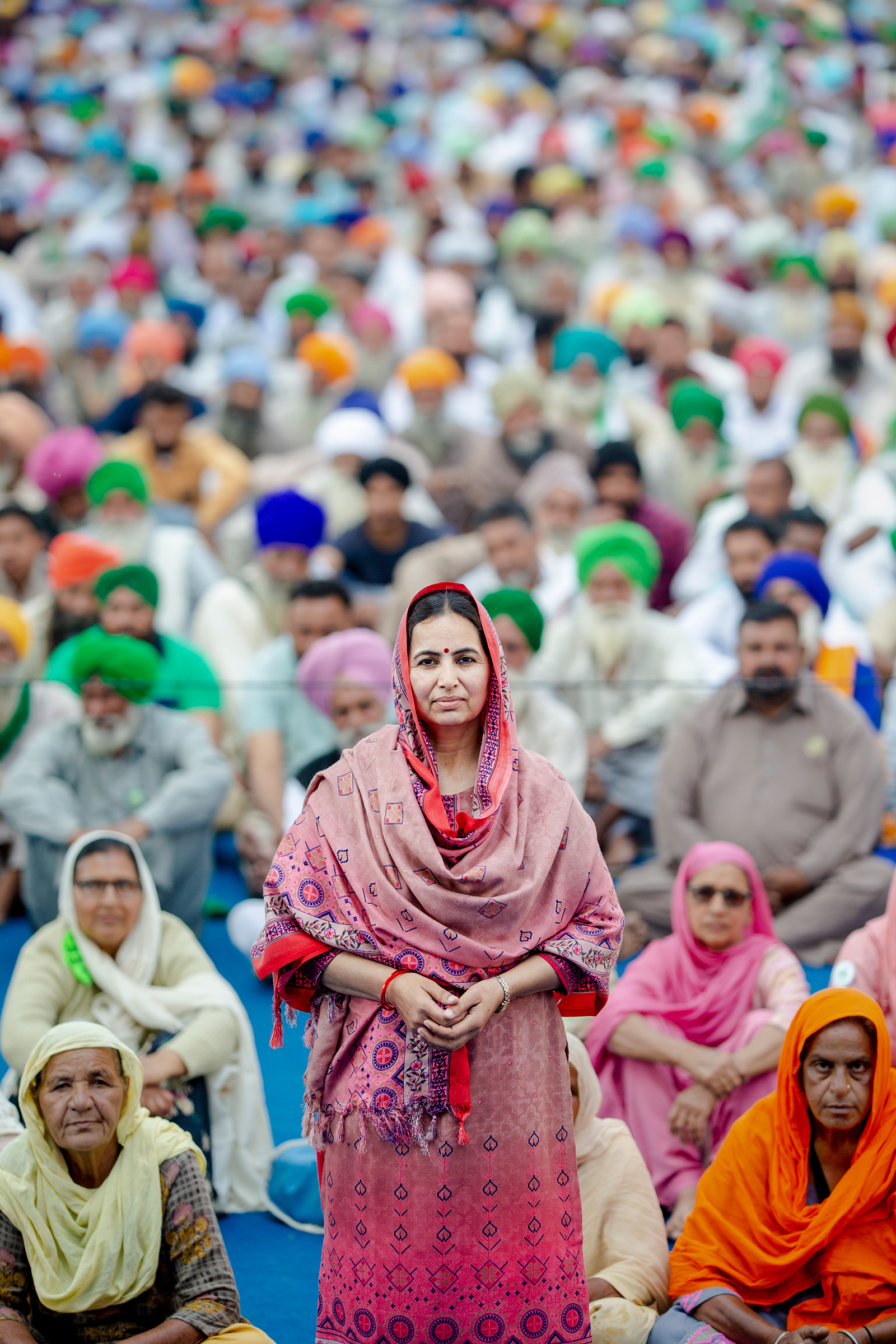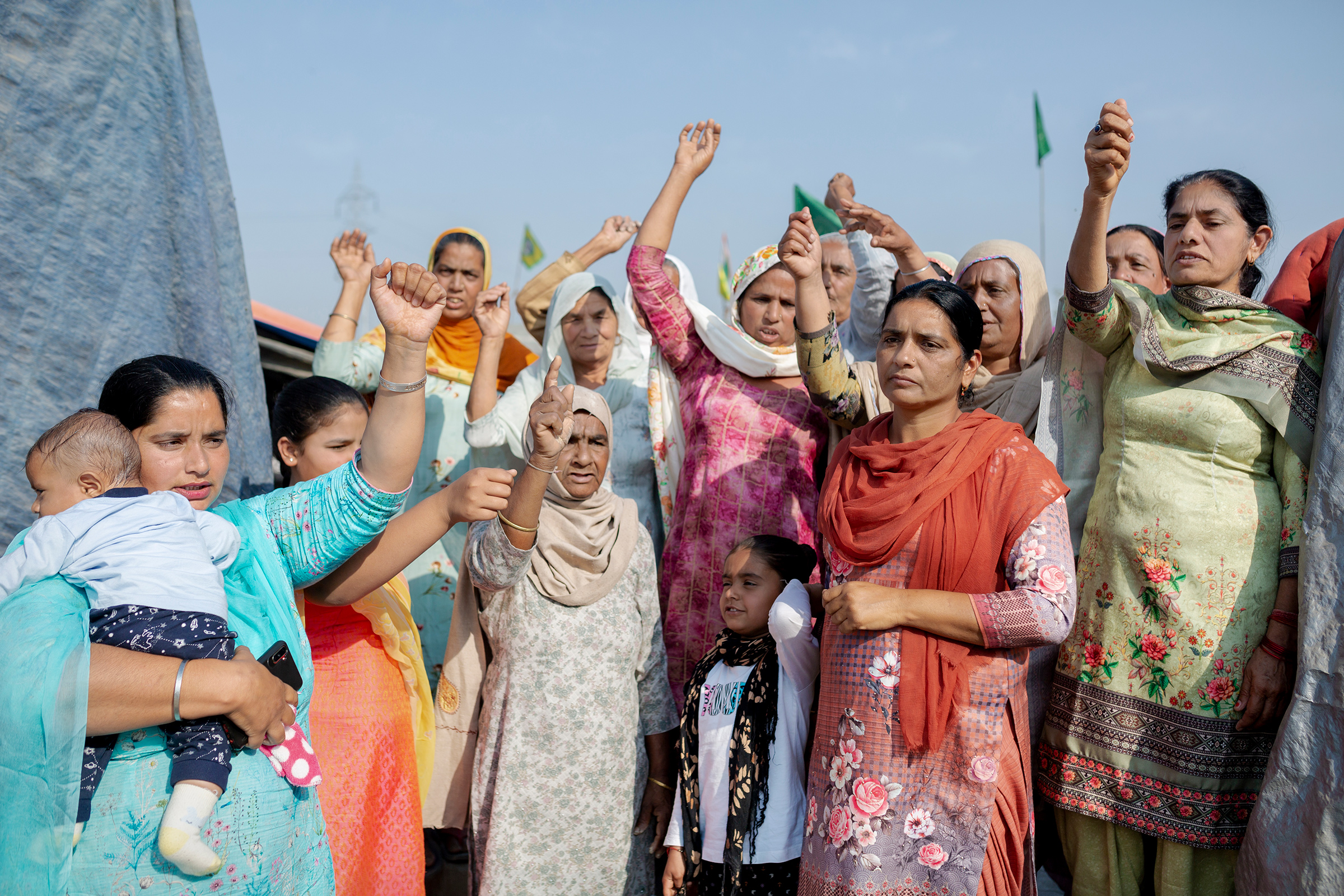The message to women was clear: Go back home. Since November, hundreds of thousands of farmers had gathered at different sites on the outskirts of the Indian capital to demand the repeal of three agricultural laws that they say would destroy their livelihoods. In January, as the New Delhi winter set in, the Chief Justice of India asked lawyers to persuade elderly people and women to leave the protests. In response, women farmers—mostly from the rural states of Punjab, Haryana and Uttar Pradesh—scrambled onto stages, took hold of microphones and roared back a unanimous “No!”
“Something snapped within us when we heard the government tell the women to go back home,” says Jasbir Kaur, a sprightly 74-year-old farmer from Rampur in western Uttar Pradesh. It’s late February and Kaur has been camping at the Ghazipur protest site for over three months, only returning home once. She was stung by the court’s suggestion that women were mere care workers providing cooking and cleaning services at these sites—though she does do some of that work—rather than equal stakeholders. “Why should we go back? This is not just the men’s protest. We toil in the fields alongside the men. Who are we—if not farmers?”

Questions like this have rarely been asked by women like Kaur, long used to having their contributions to farming overlooked as part of their household duties. But this wave of protests—the world’s largest ongoing demonstration and perhaps the biggest in human history—has prompted thousands to make their voices heard. Indians of all ages, genders, castes and religions have been united by a common goal: to roll back new agricultural laws passed in September by Prime Minister Narendra Modi’s government. The laws, suspended in January by the Supreme Court but not yet repealed, would allow private corporations to buy directly from farmers, which they say would leave them at the mercy of buyers and do away with the traditional wholesale market system or mandis, where they are assured a minimum set price for certain crops.

Women, who form the backbone of Indian agriculture, may be particularly vulnerable to corporate exploitation. According to Oxfam India, 85% of rural women work in agriculture, but only around 13% own any land. “Women are not seen as farmers. Their labor is immense but invisible,” says Jasbir Kaur Nat, a member of the Punjab Kisan Union, who is mobilizing farmers in Tikri, the protest site at the border of Haryana and Delhi.

“This law will kill us, will destroy what little we have,” says Amandeep Kaur, a farmer from Talwandi in Punjab, whose husband died by suicide five years ago, following a bad crop that landed him with a debt of around $7,000. As well as farming, Kaur works as a community health worker to support her family; she and her two daughters only got rights to the land after her husband’s death. She lost out on compensation of almost the same amount that the Indian government gives to families of farmers who die by suicide because she did not secure a post mortem of the body to certify the death as suicide. “I didn’t even know the procedure to claim compensation from the government for my husband’s death,” she says. “How am I going to negotiate with businessmen?”

The U.N.’s Food and Agriculture Organization has urged action on the gender gap in agriculture, saying women’s voices must be “heard as equal partners” to ensure both agricultural development and food security. And at the protests in India, women are speaking up. Before now, some women had never stepped out of their homes without a veil, let alone spoken onstage in front of thousands of men. Many arrive at the sites in tractors, a powerful—and previously male—symbol of farming in India. “Women are changing women here,” Nat says, praising the spirit of protest among these women. “They are claiming their identities as farmers.”

All of this is happening in India’s deeply patriarchal heartlands of Uttar Pradesh, Punjab and Haryana. Changing mindsets in states where femicide, sexual violence and gender discrimination are rampant has been a persistent challenge for activists. “We have been working to bring about gender equality in these parts for so long—but the process has been slow,” says women’s rights activist Sudesh Goyat. During the first few days of protests in Tikri, she says, she was the only woman from Haryana there. But after the court suggested women leave, they “started to pour in. They came with their families. They came with other women. They came alone. It’s no less than a miracle,” she says.


It’s also a unique opportunity to address the gender imbalance in Indian society, says Gurnaam Singh, state secretary of the Punjab Kisan Union. At the protest sites, men and women from different cultures and communities must live side by side without much privacy and under harsh circumstances.
Taking advantage of this rare situation, activists hold frequent discussions on women’s work and their contribution to the rural economy. Regular announcements from the stage about treating women as equals echo around the protest sites throughout the day. “I like this India,” says Harsharan Kaur, a young IT engineer who left a job in Dubai to volunteer at the protest site.

At the Ghazipur site, 29-year-old Ravneet Kaur, a law student from Bangalore, has successfully normalized conversations around a taboo topic in India: menstruation. She set up a women’s store at the site with the help of the women protestors, where they displayed sanitary napkins openly. “The men got used to it soon enough,” she says. “Now these conversations are normal around here. Men don’t flinch when they say sanitary napkins anymore.”
Whether such sentiments will spread beyond the protests is unclear, but for now, female farmers are being seen, heard and acknowledged—offering a new vision of what gender equality might look like for the country. “We have looked upon them as mothers, sisters, wives,” says Sukh Deep Singh, a young farmer from Punjab. “But now we see them in a different light.”
The women see themselves differently too. In Tikri, Sudesh Kandela, a 55-year-old farmer from Haryana, watches a play being staged by a local theater group, enraptured by the spectacle. “I didn’t know what I was capable of beyond the expectations of me as a woman, a wife and mother,” says Kandela, who had never before been to a protest or taken her veil off outside her home. “But I am here now,” she says, clenching her fists, “and I cannot be oppressed. I cannot be intimidated. I cannot be bought.”
More Must-Reads from TIME
- How Donald Trump Won
- The Best Inventions of 2024
- Why Sleep Is the Key to Living Longer
- Robert Zemeckis Just Wants to Move You
- How to Break 8 Toxic Communication Habits
- Nicola Coughlan Bet on Herself—And Won
- Why Vinegar Is So Good for You
- Meet TIME's Newest Class of Next Generation Leaders
Contact us at letters@time.com
